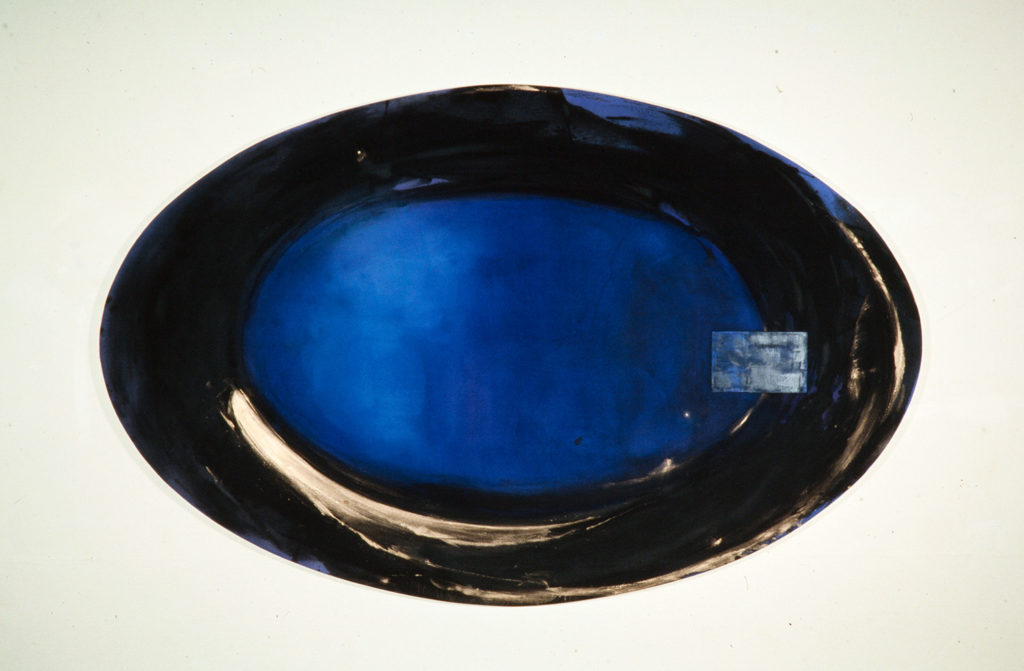ARTISTS Gretchen Albrecht, Gavin Chilcott, Jaqueline Fraser, Bill Hammond, Tony Lane, Richard Reddaway, John Reynolds, James Ross, Michael Stevenson, Elizabeth Thomson OTHER VENUES Sarjeant Gallery, Whanganui, 26–29 December 1991; Pabellōn de las Artes, Expo, Seville, 25 June–16 July 1992; Stelling Gallery, Leiden, 29 August–11 October 1992; Centro Cultural del Conde Duque, Madrid, 4 February–4 April 1993; Centro Cultural de Caja Espana, Zamora, 16 April–11 May 1993; Centre Civic Casa Elizalde, Barcelona, 8 June–18 July 1993; Auckland City Art Gallery, 15 October–21 November 1993 SPONSORS Queen Elizabeth II Arts Council, Bell Gully Buddle Weir, Jenny Gibbs et al. PUBLICATION writers Jim and Mary Barr, Luit Bieringa, Linda Gill, Peter Leech, Robert Leonard, William McAloon, Francis Pound, Allan Smith, Douglas Standring, Bridget Sutherland, Ian Wedde
While travelling abroad in 1988, Wellington artist Tony Lane realises that Expo '92 in Seville, Spain, will be an important art event. Over 100 countries will be represented. The theme will be ‘The Age of Discovery’. After learning the QEII Arts Council is supporting a major New Zealand ceramics exhibition there, Lane and Auckland artist James Ross decide to organise an art show too. Lane says, ‘The art world in New Zealand hadn't really thought about it. I'd never organised an exhibition overseas, so I came back and got in touch with James Ross in Auckland—he's done shows in New York and other places. It just grew organically from there.’
Distance Looks Our Way showcases work by ten New Zealand artists, including Lane and Ross. It’s not intended to be a definitive survey of New Zealand art, ‘more like a ‘slice of the pie’, says Ross. The title is taken from a 1940s Charles Brasch poem, which evokes the way New Zealand identity has been based on the country's isolation, but the show turns this idea on its head.
Prime Minister Jim Bolger opens the show, the day before New Zealand Day. Over the show's three-week duration, it's seen by 67,000 people. New Zealand’s Expo 92 Commissioner General Ian Fraser says the show ‘will demonstrate to a very wealthy European audience that New Zealand has a lively and sophisticated culture. Together with the shows in the New Zealand pavilion it will help move the image of this country away from un-processed, bulk produce and empty landscapes, towards an image consistent with value-added exports and tourist products we most sell in greater volumes to survive.’
Several artists explore historical old-world imagery, but from an antipodean perspective. Gavin Chilcott’s vase-shaped carpet and his matching paintings on easels evoke an idealised Mediterranean. Richard Reddaway tiles photos of his body to create a frieze that recalls Romanesque architecture. John Reynolds's six-metre-long canvas, The Impossible Embrace incorporates the chimera and sphinx from Gustave Flaubert's Temptation of Saint Anthony.
There are local references too. Elizabeth Thomson’s Phantoms of the Night consists of 100 bronze moths. All of the moth species have a place in Māori lore and are at risk following habitat decline due to colonisation. Jacqueline Fraser's installation Ko Aoraki te Maunga (Mt Cook Is the Mountain) refers to her Māori heritage. TJ McNamara says: ‘The untutored eye would probably see no more than a delicately expressed wedding-bedroom piece done in the unusual material of electric cable.’ Paintings by the youngest artist, Michael Stevenson, celebrate small-town New Zealand life.
Paintings dominate the show. There are Gretchen Albrecht’s colourful ovoid abstractions and Tony Lane’s gilded icons, Bill Hammond’s speed-freak comic book graphics and James Ross’s gothic modernism—where modernist abstraction is haunted by Holbein's anamorphic vanitas skull. In a Herald interview, patron Jenny Gibbs says, ‘People who saw the show told me that all the artists looked so fresh, so optimistic. They are sick of angst-ridden art, political art, pessimistic art.’
After Seville, Luit Bieringa acts as exhibition co-ordinator, organising a tour to galleries in Madrid, Barcelona, Zamora in Spain, and Leiden in Holland, then back through New Zealand, where Wellington is the last stop. Bieringa tells the Dominion, ‘I've been hearing lately that there are quite a few hurt feelings in the New Zealand art world, by people who were left out. That's inevitable. It's silly to think just one show is going to put us on the map. New Zealand artists should be participating overseas much more broadly than we are.'







































































